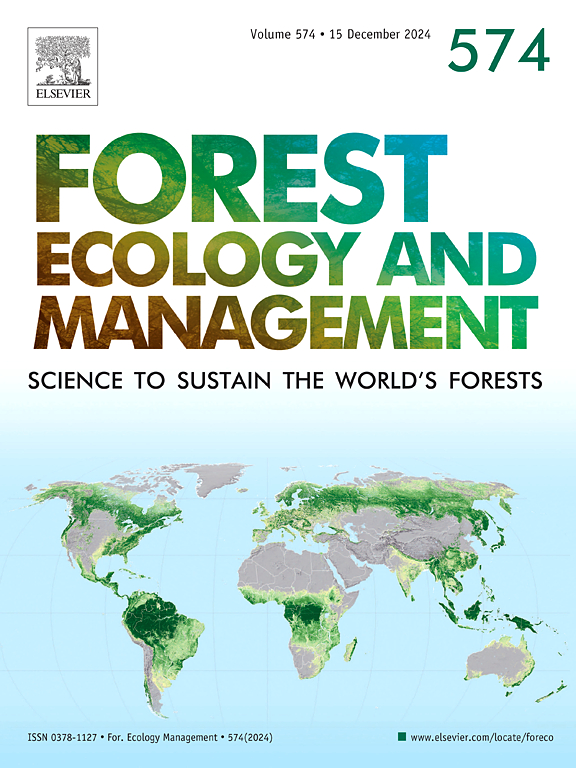Effect of thinning in birch stands: A review
IF 3.7
2区 农林科学
Q1 FORESTRY
引用次数: 0
Abstract
The genus birch is one of the most widespread tree genera in the northern hemisphere. Most of the species of the genus Betula are pioneer trees forming early succession – pioneer stands after disturbances. Thinning in pioneer stands should therefore reflect these biological assumptions. The effects of thinning were divided into: the effects on production parameters, on additional regeneration and on site microclimate. Thinning, or increased tree spacing, promote a longer and wider living crown, which stimulates the diameter growth of the released trees. The stronger and earlier the intervention the more intense and sustained the response. A strong diameter growth (increment) is a key tool for achieving high-quality birch timber. An optimal thinning regime can further increase the resistance of birch to snow and wind damage. Released birch trees tend to be more resistant to drought. Birch stands under light thinning are more productive than unthinned stands, while heavy thinning leads to a reduction in overall biomass and volume of productivity. This potential loss can be compensated in birch management by increased production of quality timber in a shortened rotation. By optimizing the thinning, the subsequent regeneration of late-succession trees in these birch stands can be supported. The degree of canopy opening should reflect the site and the requirements of the tree species of the subsequent regeneration – interventions will be stronger in drier sites and for more light-demanding species.
求助全文
约1分钟内获得全文
求助全文
来源期刊

Forest Ecology and Management
农林科学-林学
CiteScore
7.50
自引率
10.80%
发文量
665
审稿时长
39 days
期刊介绍:
Forest Ecology and Management publishes scientific articles linking forest ecology with forest management, focusing on the application of biological, ecological and social knowledge to the management and conservation of plantations and natural forests. The scope of the journal includes all forest ecosystems of the world.
A peer-review process ensures the quality and international interest of the manuscripts accepted for publication. The journal encourages communication between scientists in disparate fields who share a common interest in ecology and forest management, bridging the gap between research workers and forest managers.
We encourage submission of papers that will have the strongest interest and value to the Journal''s international readership. Some key features of papers with strong interest include:
1. Clear connections between the ecology and management of forests;
2. Novel ideas or approaches to important challenges in forest ecology and management;
3. Studies that address a population of interest beyond the scale of single research sites, Three key points in the design of forest experiments, Forest Ecology and Management 255 (2008) 2022-2023);
4. Review Articles on timely, important topics. Authors are welcome to contact one of the editors to discuss the suitability of a potential review manuscript.
The Journal encourages proposals for special issues examining important areas of forest ecology and management. Potential guest editors should contact any of the Editors to begin discussions about topics, potential papers, and other details.
 求助内容:
求助内容: 应助结果提醒方式:
应助结果提醒方式:


